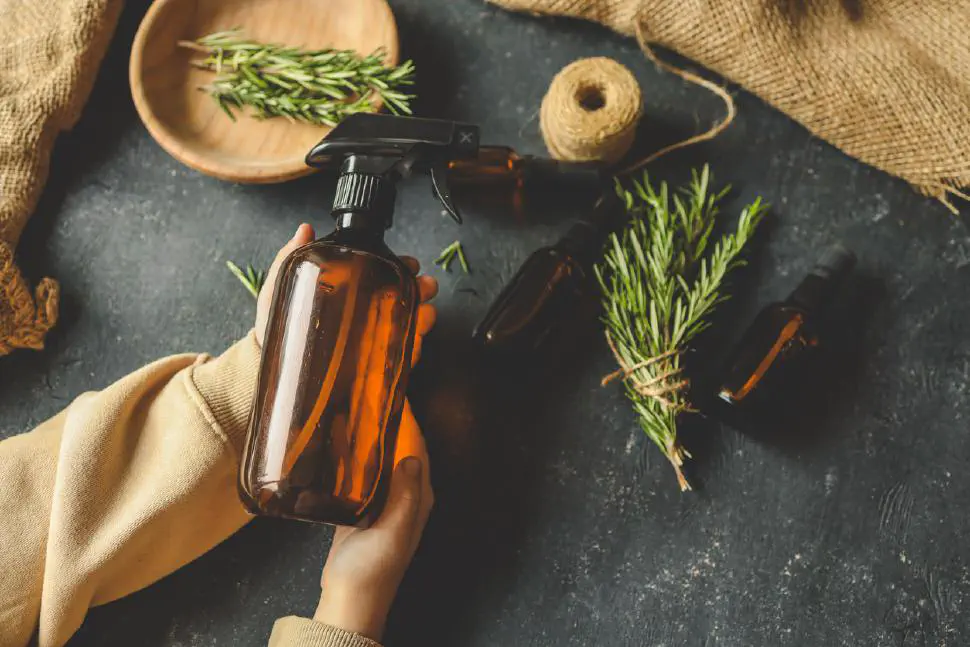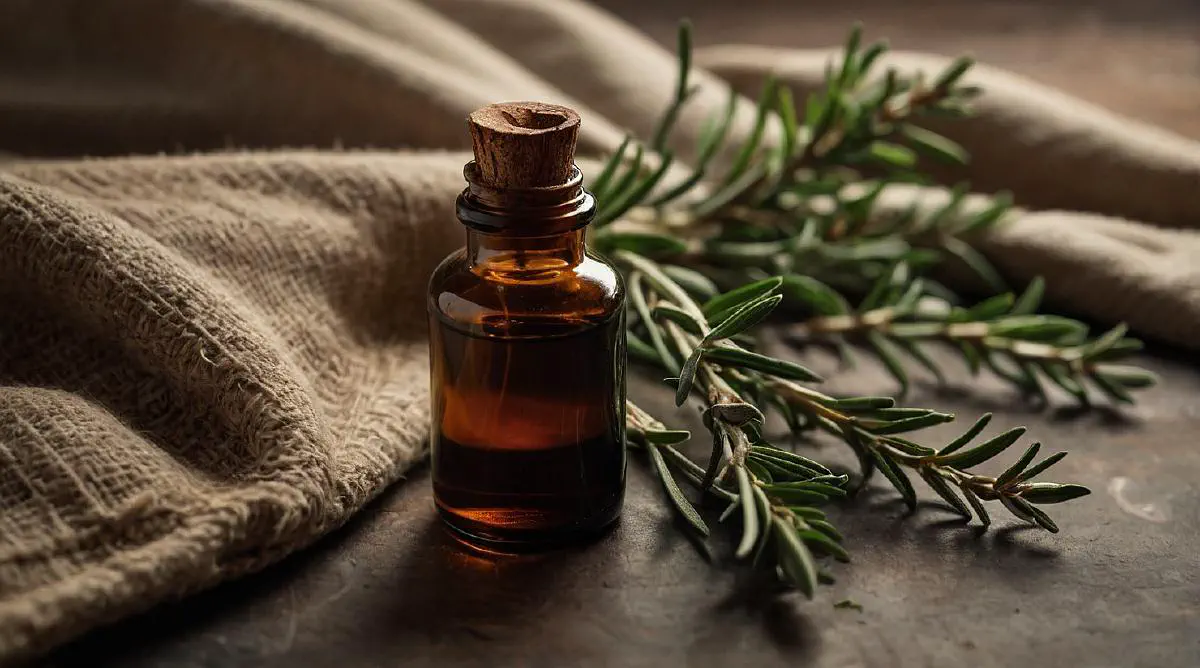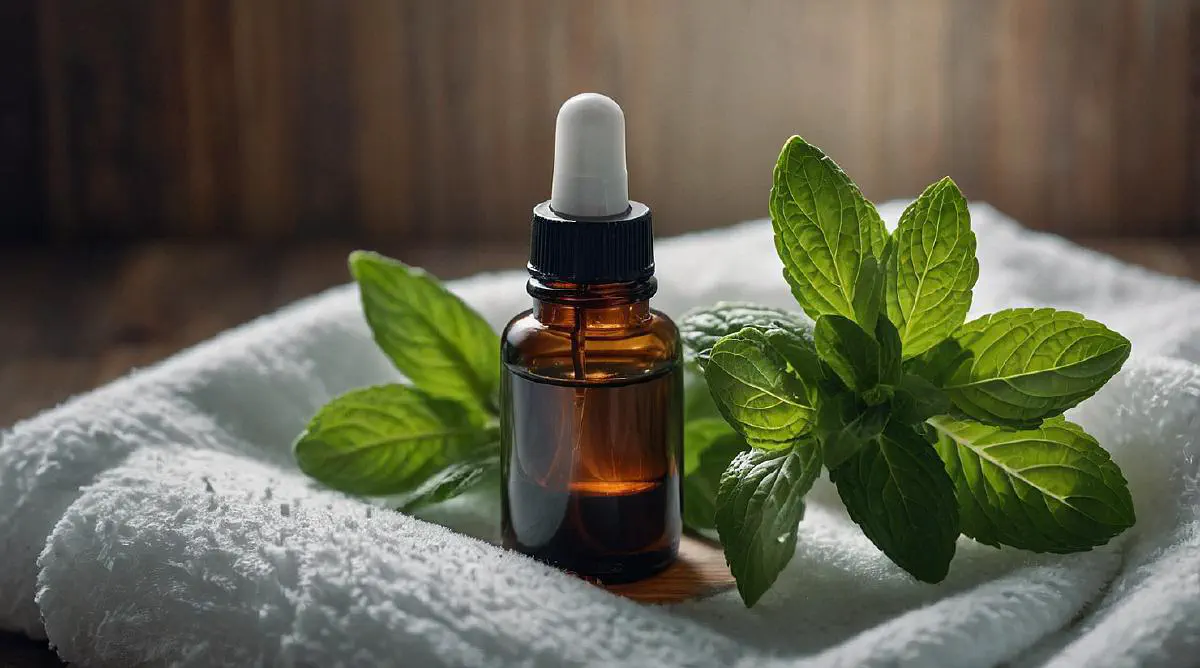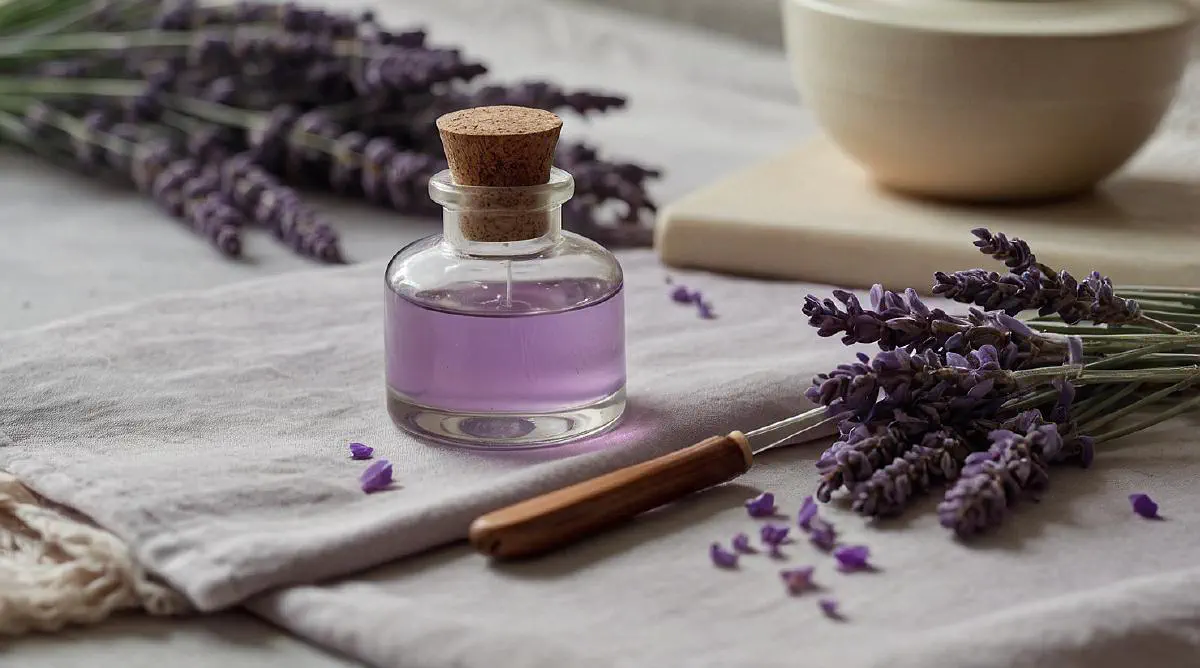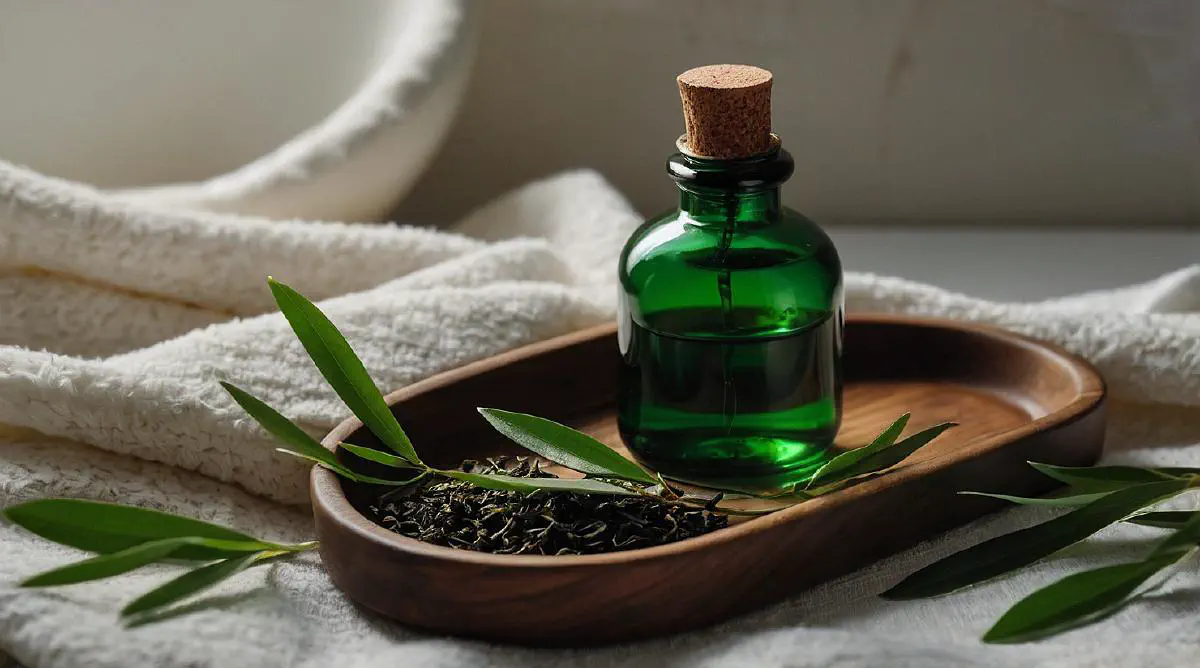Longing for luscious locks but put off by expensive salon treatments? Luckily, nature offers a treasure trove of ingredients that can work wonders for your hair growth goals. Understanding how hair grows and the common setbacks like thinning and shedding are the first steps in crafting your path to healthy, voluminous hair.
Many people overlook the power of natural oils, but the right carrier oils can turn a homemade remedy into a powerful growth aid, customized for your unique hair type. Whether it involves the invigorating properties of rosemary or the soothing touch of peppermint, the right essential oils can make all the difference.
In this article, we’ll guide you step-by-step to concoct your own natural hair growth oil using potent essential oils and additional ingredients like castor and black seed oil. From selecting ingredients to applying and even storage tips, you’ll learn everything needed to boost hair health right in your kitchen.
Understanding Hair Growth and Volume
Hair growth and volume are crucial for personal appearance and self-esteem. They offer a glimpse into our nutritional balance and overall health. Nutrients like biotin, B vitamins, vitamin C, Omega-3 fatty acids, collagen, and vitamins D and A are vital for healthy hair growth.
Essential oils can also help enhance hair thickness. Oils like cedarwood, lavender, rosemary, thyme, and peppermint are recognized for their benefits in improving hair growth. They work by increasing blood flow to the scalp, which is crucial for stimulating hair follicles.
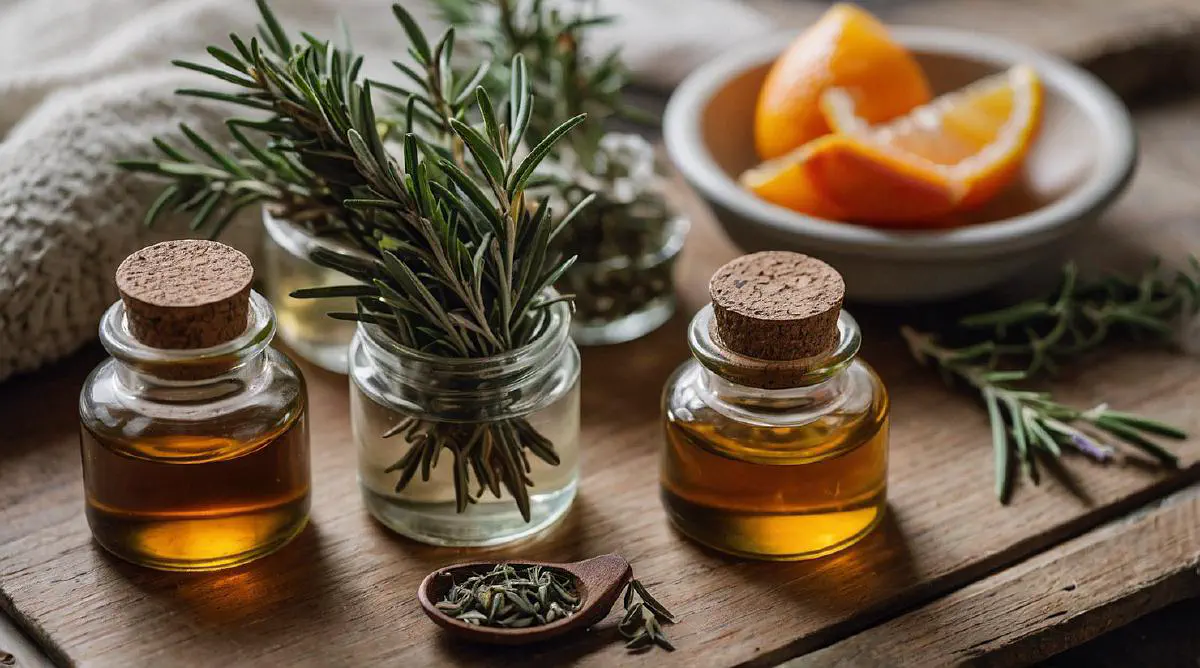
Here’s a quick list to support healthier hair:
- Biotin and B Vitamins: Enhance hair strength and resilience.
- Vitamin C: Aids collagen production, vital for hair structure.
- Omega-3 Fatty Acids: Nourish hair follicles for volume and shine.
- Rosemary and Peppermint Oil: Improve blood circulation to the scalp.
By incorporating these nutrients and essential oils, you can encourage healthier hair growth and achieve the volume you desire. Keep an eye on your diet and hair care routine to maximize results.
Common Causes of Hair Thinning and Shedding
Hair thinning and shedding can be frustrating. Understanding the common causes can help in addressing these issues effectively.
Hormonal Changes: After childbirth, many women experience hair thinning as their hormone levels adjust. This is a normal part of the post-partum process.
Genetics: A genetic predisposition plays a significant role in hair thinning. If your family members have experienced this, it could be the cause for you too.
Stress: High stress levels disrupt normal hair growth cycles, resulting in increased shedding. Managing stress through relaxation techniques might help.
Tight Hairstyles: Wearing tight ponytails or braids can stress hair follicles, causing them to break or thin out over time.
Nutritional Deficiencies: Lack of essential nutrients may lead to hair thinning. Eating a balanced diet rich in vitamins and minerals is crucial for maintaining healthy hair.
Here’s a simple table summarizing these causes:
| Cause | Description |
|---|---|
| Hormonal Changes | Post-childbirth hormone adjustments leading to hair thinning. |
| Genetics | Inherited tendency for thinning and shedding. |
| Stress | Disrupts hair growth cycles and causes shedding. |
| Tight Hairstyles | Puts stress on follicles, leading to breakage. |
| Nutritional Deficiencies | Lack of nutrients affecting hair health. |
Addressing these can contribute to a healthier hair journey.
Choosing the Right Carrier Oils
When creating your homemade hair growth oil, selecting the right carrier oils is essential for achieving the best results. Carrier oils serve as the base for your hair oil mix, helping to deliver nutrients to the hair and scalp. They also aid in moisturizing and conditioning, ensuring that your hair remains healthy and vibrant. Various oils suit different hair needs, from adding shine to promoting healthy hair growth. Understanding the unique benefits of each carrier oil can help you tailor your blend to meet your specific hair care requirements.
Benefits of Various Carrier Oils for Hair
Carrier oils provide multiple benefits, making them vital ingredients in homemade hair oil recipes. Coconut oil is a popular choice, known for its deep conditioning properties that help moisturize dry and damaged hair. It’s particularly great for curly hair, which requires extra hydration. Olive oil is another excellent carrier oil, offering nourishment and aiding in hair’s overall health. It helps lock in moisture and creates a smooth, healthy appearance.
Castor oil is often included in hair growth formulas due to its ability to penetrate and nourish the scalp without clogging pores. While there’s no strong scientific evidence directly linking castor oil to hair growth, many users report benefits in terms of hair thickness. Almond oil, when combined with castor oil, creates a smooth blend that softens and nourishes hair, ensuring it feels silky and looks shiny. Jojoba oil is a versatile carrier oil, favored for its ability to nourish the scalp without leaving a heavy residue, making it perfect for various hair types.
Selecting the Best Oil for Your Hair Type
Choosing the right oil for your hair type is crucial to ensure you receive the maximum benefits. Fine hair often benefits most from lighter oils like almond oil or jojoba oil. These oils won’t weigh down your hair but will still provide the necessary moisture and nourishment. For those with coarse or thicker hair, heavier oils like castor oil or olive oil may be more suitable. They penetrate deeply, offering better hydration and nourishment.
Coconut oil remains a versatile choice, particularly beneficial for individuals with dry or curly hair types due to its rich moisturizing properties. Jojoba oil is often recommended for all hair types because it closely mimics the skin’s natural sebum, providing balanced hydration without greasiness. Finally, argan oil is particularly effective in managing frizz for medium to thick hair textures, offering a sleek and smooth finish while maintaining hair’s natural shine.
Essential Oils for Hair Growth
Essential oils are a wonderful addition to homemade hair growth treatments. They can improve blood flow to the scalp, which can enhance hair health and stimulate new hair growth. Essential oils are also known for their ability to address various scalp issues such as dryness and itchiness. These oils contain antimicrobial properties, which help keep your scalp clean and free from infections that could hinder hair growth. When used in hair oils, they should be mixed with carrier oils like sweet almond or jojoba oil to ensure safe and effective application. It is important to spot test these oils on a small skin area to check for any allergic reactions or irritation.
Rosemary Oil
Rosemary oil is renowned for its benefits in promoting hair growth. This essential oil enhances blood circulation to the scalp, allowing nutrients to reach the hair follicles more efficiently. It reduces inflammation, which helps tackle itchy scalp and dandruff issues. By including rosemary oil in your hair care routine, you’re not only targeting hair loss but also enjoying its pleasant aroma during the application. Supported by studies, rosemary oil’s efficacy in addressing hair loss makes it a favored choice in many hair growth oil recipes.
Peppermint Oil
Peppermint oil is treasured for its ability to invigorate the scalp and aid hair growth. By stimulating blood flow, this essential oil helps vital nutrients reach the hair follicles, leading to stronger and thicker hair. The cooling sensation of peppermint oil is not only refreshing but also beneficial for improving circulation. This property is crucial for encouraging new hair growth. Furthermore, studies indicate that peppermint oil can enhance hair thickness and growth rate. Its refreshing nature makes it a popular choice in hair treatments aimed at revitalizing scalp health and supporting hair growth.
Lavender Oil
Lavender oil is a soothing essential oil that supports a healthy scalp environment. Beyond its calming scent, lavender oil is believed to accelerate hair growth by promoting faster cell growth. Additionally, it helps in reducing stress, a common factor in hair loss. Besides, lavender oil adds shine to hair and contributes to a pleasant hair care experience. A study even showed that lavender essential oil effectively promoted hair growth in mice, suggesting its potential benefits for human hair care routines as well.
Tea Tree Oil
Tea tree oil offers powerful antimicrobial and antibacterial benefits for hair health. It plays a key role in cleaning and unclogging hair follicles, which is necessary for healthy hair growth. This essential oil aids in stimulating new growth by keeping follicles clear and clean. It is also effective against dandruff due to its antifungal properties. By preventing buildup on the scalp, tea tree oil lays a healthy foundation for hair growth when combined with other nourishing oils. Its cleansing action maintains the balance necessary for vibrant hair and scalp conditions.
Additional Effective Ingredients
Creating a homemade hair growth oil involves selecting ingredients that nourish and encourage hair growth. Natural oils such as almond oil and coconut oil are popular choices. Almond oil is known for promoting quick and easy hair growth, while coconut oil nourishes and moisturizes the scalp. Adding rosemary essential oil can further enhance hair health by encouraging blood circulation and promoting healthier hair growth. Fenugreek seeds, with their hair growth properties, can also be integrated into your hair oil mixture. Lastly, sesame seed oil provides essential vitamins and fatty acids that are crucial for hair nourishment. By combining these ingredients, you can create a powerful natural hair growth oil tailored to your hair type and needs.
Benefits of Castor Oil
Castor oil is a versatile and beneficial ingredient in homemade hair growth oil recipes. It is non-comedogenic, meaning it won’t clog pores, which allows it to nourish the scalp effectively. As a renowned carrier oil, it pairs well with essential oils that encourage hair growth. Though scientific evidence is limited, many people find that castor oil helps add volume and thickness to their hair. Additionally, combining castor oil with oils like almond and jojoba can address dry scalp issues. Known for reducing hair thinning, castor oil supports a fuller head of hair by enhancing blood flow to the hair follicles and providing essential nutrients.
Incorporating Black Seed Oil
Black seed oil is a powerful addition to any hair growth regime. Celebrated for its ability to significantly boost hair growth and address hair loss, this oil also tackles scalp issues like fungal infections that might contribute to thinning hair. It is rich in antioxidants and anti-inflammatory properties, promoting a healthy scalp environment. This dual approach not only aids in healthier hair growth but helps maintain consistent hair health. Black seed oil can be applied topically, but a skin patch test is advisable before widespread use. By incorporating black seed oil into your hair care routine, you can support a thriving, healthier scalp environment.
Ylang-Ylang Oil Uses
Ylang Ylang oil is an essential ingredient for promoting hair growth. Known for its pleasant fragrance, it adds a delightful scent to homemade hair oil treatments. This oil is believed to stimulate hair growth by balancing natural oil production and reducing hair breakage. Moreover, using Ylang Ylang oil encourages a healthier scalp environment, crucial for fostering hair growth. When crafting a hair growth oil, it can be combined with carrier oils and other essential oils like cedarwood for enhanced benefits. By using Ylang Ylang oil in your homemade hair products, you create a fragrant and effective solution dedicated to improving your hair health and preventing breakage.
Step-by-Step Guide to Creating Hair Growth Oil
Creating your own hair growth oil at home is both simple and effective. This guide will walk you through the process of selecting ingredients, mixing them properly, and storing the oil for the best results. A well-prepared hair oil can address issues like hair thinning and dryness while promoting healthier hair. By following these steps, you’ll not only save money but also tailor the oil to suit your unique hair type and needs.
Selecting Your Ingredients
Choosing the right ingredients is crucial for crafting an effective hair growth oil. Start by understanding your hair type and needs. Almond oil is excellent for fine, thin hair because it adds moisture without weighing it down. Castor oil is ideal for thick, curly, or dry hair but should be mixed with another carrier oil for easier washout. Sesame seed oil is rich in essential fatty acids and vitamins, promoting a shiny, healthy appearance.
Essential oils like rosemary and peppermint are popular for their potential to stimulate hair growth. Rosemary oil can improve scalp health and texture, while peppermint oil invigorates and increases blood circulation to the scalp. As a base, you can’t go wrong with edible oils like coconut, olive, and sesame. These can be combined with herbs like fenugreek and hibiscus leaves for added benefits.
Properly Mixing Oils
Mixing oils properly is essential to maximize their benefits for hair growth and scalp health. For a balanced blend, start with 50ml of sesame seed oil. Add 24ml each of castor oil and almond oil to the mix. This combination provides a great foundation of nutrients for your hair.
Enhance this mixture with essential oils. Add 1.5ml of rosemary essential oil, known for stimulating hair follicles and reducing hair thinning. Include 0.6ml of peppermint essential oil, which promotes circulation and invigorates the scalp. These essential oils not only help with hair health but also create a refreshing scent.
Proper mixing creates a healthier scalp environment. The carrier oils deeply moisturize the follicles, while the essential oils provide a protective layer to the hair strands. This combination results in noticeable improvements in hair softness and shine.
Storing the Oil Correctly
Storing your homemade hair growth oil properly ensures it remains effective over time. Use a glass jar with a tightly sealed lid. This prevents any outside air or moisture from affecting the oil’s quality. Before storing, make sure the oil is completely cool to avoid condensation inside the jar.
To maintain the oil’s potency, keep it in a cool, dry place. This could be a bathroom cabinet or another temperature-controlled space. Proper storage extends the oil’s shelf life, allowing you to benefit from its nourishing properties over multiple uses. By following these guidelines, your homemade oil stays fresh and effective for healthier hair growth on your journey.
Application Techniques for Optimal Results
To ensure the best results when using natural hair growth oil, start by sectioning your hair. Drop a few drops of oil onto your scalp between each section, beginning at the hairline and moving backward. Gently massage the oil into your roots and scalp. This boosts blood circulation and promotes healthy hair growth without leaving your hair excessively oily.
Always dilute essential oils in a carrier oil like coconut, almond, or jojoba oil. This prevents skin irritation and ensures the oil absorbs effectively. Consider these carrier oils:
| Carrier Oil | Benefits |
| Coconut Oil | Moisturizes dry hair |
| Sweet Almond Oil | Nourishes hair |
| Jojoba Oil | Balances scalp oil |
Use the hair oil as a pre-wash treatment because it can make hair look greasy. Plan for a wash afterward to achieve a clean finish. Finally, store your hair oil in a glass bottle, away from sunlight. This prevents deterioration and maintains the oil’s effectiveness.
By following these steps, you can ensure your natural hair growth oil application fosters healthier, stronger hair.
Dietary Changes to Support Hair Growth
To encourage healthy hair growth, your diet plays a crucial role. Hair is primarily composed of keratin, a protein. Thus, a protein-rich diet is essential. Foods like chicken, eggs, and beans are excellent sources of protein. Here’s a quick list of nutrients vital for healthy hair:
- Omega-3 Fatty Acids: Essential for overall hair health; found in avocados, flaxseeds, and salmon.
- Biotin and Collagen: Support strong and healthy hair for all hair types.
- Vitamins B, C, D, and A: Promote hair growth and prevent hair thinning.
- Iron: Vital for blood flow to hair follicles. Try spinach or lean red meat.
Here’s a simple table to guide you:
| Nutrient | Key Sources |
| Protein | Chicken, eggs, beans |
| Omega-3 Fatty Acids | Avocados, flaxseeds, salmon |
| Biotin and Collagen | Eggs, nuts, fish, bone broth |
| Vitamins B, C, D, and A | Citrus fruits, leafy greens, carrots |
| Iron | Spinach, red meat, lentils |
Incorporating these nutrients into your diet can support your hair growth journey and overall hair health. Remember, balanced nutrition is the key to healthier hair!
Tools that Enhance Hair Growth Efforts
For those seeking healthier and thicker hair, utilizing tools like derma rollers can be a game-changer. These tools primarily work by boosting blood flow to the scalp, which is essential for hair growth. When paired with homemade hair treatments, they form a comprehensive hair care routine at home. Increasing scalp blood circulation is a significant factor in promoting healthy and thriving hair. By integrating such tools into your regimen, you can improve hair thickness and overall hair health effortlessly.
Utilizing Derma Rollers
Derma rollers are a cost-effective and convenient tool for home use, designed to encourage hair growth by stimulating the scalp. Equipped with a roller covered in tiny needles, they mimic the effects of microneedling. These needles enhance blood circulation, activating the body’s natural healing processes.
Using a derma roller consistently can significantly boost the blood flow to your scalp. This is crucial for increasing hair growth and improving the health of hair follicles. Over time, these tools have gained popularity due to their proven effectiveness in promoting hair growth at home.
When incorporating derma rollers into your hair care routine, it’s essential to be gentle. Regular use, in conjunction with DIY hair treatments, can elevate your hair growth journey, leading to a noticeable improvement in hair thickness and strength.
Personal Testimonials and Expert Insights
Many people have found success with DIY hair growth oils, sharing their stories of improved hair health and slower hair thinning. One popular recipe includes sesame seed oil, castor oil, sweet almond oil, rosemary essential oil, and peppermint essential oil. These ingredients work together for healthier hair.
Benefits Highlighted:
- Nourished Scalp: Castor oil and sesame seed oil are known to hydrate dry hair and promote blood flow to the scalp.
- Boosted Hair Growth: Rosemary oil and peppermint oil are believed to stimulate blood circulation, which may enhance hair growth.
- Healthier Hair: Sweet almond oil and fatty acids help reduce hair breakage and cater to various hair types, including curly hair.
Feel free to try this homemade hair oil recipe for your own hair growth journey. Many users have experienced reduced hair fall and healthier hair, praising the blend’s effectiveness in nourishing the scalp. For best results, incorporate ingredients like tea tree oil, as it keeps hair follicles clean.
Incorporating these simple, natural oils into your routine could be the key to faster and healthier hair growth.
Conclusion and Final Tips
In conclusion, making natural hair growth oil at home is simple and effective. By combining oils like castor, almond, and essential oils such as rosemary or peppermint, you can create a potent formula to nourish your hair. Different oils suit different hair types. For example, argan oil tames frizz in medium to thick hair, while sweet almond oil is ideal for thin and fine hair.
Final Tips for Healthier Hair
- Choose the Right Oil: Match the oil with your hair type for best results.
- Mix Wisely: Pair castor oil with a lighter carrier oil to ease application and rinsing.
- Regular Use: Consistency is key. Apply the oil once or twice a week for optimal hair health.
- Massage for Circulation: Gently massage the oil into your scalp to improve blood flow and promote growth.
By following these simple steps, you’ll support healthier hair growth and enjoy the benefits of homemade solutions. This method not only saves money but also allows for a personalized approach to hair care.

